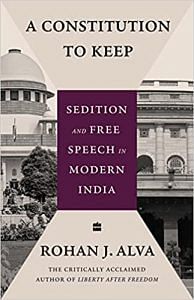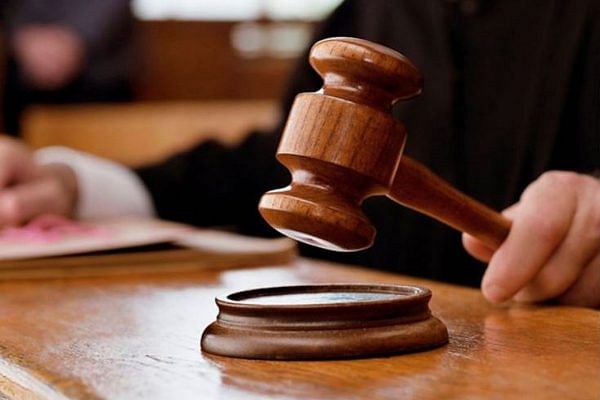It is important to explore why, under the Constitution, ‘sedition’ (as defined in Section 124A) is unrelated to ‘public order’ when it comes to the enumerated grounds in Article 19(2). For this, we must turn to history to understand the decisive distinction which the Constitution drew between sedition and public order.
As we saw, the earliest occasion on which the Constituent Assembly dealt with sedition was when the Advisory Committee prepared its Interim Report on Fundamental Rights in April 1947. In the charter of ‘Justiciable Fundamental Rights’ which accompanied the Interim Report, the Advisory Committee had stipulated that the freedom of speech, could be curbed on the broad grounds of public order, morality, and a declared emergency.
For the freedom of speech, the Advisory Committee also prepared an additional list of specific restrictions, including ‘sedition.’ But on 30 April 1947, when the recommended clause on free speech was taken up by the Assembly, Patel announced that he was not going to move the specific list of restrictions that had been recommended.
That is how sedition (as contained in Section 124A) was abandoned on the floor of the Assembly by Patel. What was approved by the Assembly on that day was a provision for curbing of free speech on three grounds only, including public order. This early vote on free speech made a clear distinction between sedition and public order, in that they operated in entirely different spheres. ‘Public order’ dealt with matters of public safety and local interests. ‘Sedition’ dealt only with Section 124A. Had public order covered sedition too, there would have been no need to separately mention ‘sedition’ in the list of restrictions on the freedom of speech, as had been proposed by the Advisory Committee in its Interim Report.
This distinction, between sedition and public order, was observed by B.N. Rau too. The freedom of speech and expression in Clause 15(1) of Rau’s Draft Constitution of October 1947, was subject only to public order and morality. Next to the free speech clause, Rau had made a marginal noting that the source of inspiration for his free speech clause (as well as the other civil rights in Clause 15) was Article 40(6) of the Irish Constitution. Important to note is that in the Irish Constitution, the freedom of speech was subject to public order as well as sedition. When Rau looked at the Irish Constitution, he only borrowed the ground of ‘public order’ and not the ground of sedition. Thus, in Rau’s Draft Constitution too, the absence of ‘sedition’ clearly indicated that Section 124A was not to be a fetter on free speech.
In the Draft Constitution prepared by the Drafting Committee in 1948, a reversal occurred. Draft Article 13 contained specific civil rights, like the right to move freely across India and the right to practise one’s choice of profession. Draft Article 13(1) (a) guaranteed the freedom of speech and expression, and draft Article 13(2) contained the grounds on which free speech could be restricted, in which ‘sedition’ was specifically enumerated as a curb on free speech. However, ‘public order’ as an enumerated ground in draft Article 13(2) was conspicuous by its absence.
Public order was not to be a ground on which free speech could be curbed. In effect, even the Drafting Committee confirmed the thesis that ‘sedition’ and ‘public order’ were unrelated. More importantly, ‘public order’ was not the ground on which Section 124A was to be sustained. Due to this understanding, a separate ground of ‘sedition’ had to be enumerated as a restriction on the freedom of speech for Section 124A to remain valid. Sedition had nothing to with the preservation of public order and vice versa.
As we saw, when the Constituent Assembly took up the freedom of speech for discussion on 1 December 1948, K.M. Munshi spearheaded the effort to have sedition deleted. He succeeded because the next day Dr Ambedkar agreed with Munshi and decided to drop sedition as a curb on free speech. But Munshi did tell the Assembly that only a law which treated positive acts aimed at undermining State security or seeking to overthrow the State as sedition would be authorized by the Constitution as a curb on free speech.
What Munshi achieved was to establish as a constitutional canon that speaking about the government in less than favourable terms had nothing to do with sedition, much less with public order. Simply exciting disaffection did not even remotely harm State security interests, let alone pose a threat to public order. As Munshi saw it, government regulation could apply only to such speech and expression which truly threatened the foundation of
the State.
Nonetheless, when the freedom of speech was under discussion, the Constituent Assembly wrestled with the idea of enumerating ‘public order’ as a ground to curb free speech. Just as the debates began on 1 December 1948, Damodar Swarup Seth, who represented the United Provinces, immediately moved Amendment No. 412, by which all the civil rights enumerated in draft Article 13, including the freedom of speech, were to be made subject only to public order or morality.
As the debates progressed, the Assembly seemed to be making a move towards enumerating ‘public order’ as a curb for the other rights enumerated in draft Article 13, but not for free speech. For instance, Dr Ambedkar moved an amendment motion to make public order a ground for restricting the freedom of association, which the Assembly approved.
Seth’s efforts proved unsuccessful, for on 2 December 1948 the Assembly rejected his amendment motion, which meant that the Assembly rejected the proposal of curbing of free speech on the ground of public order.
This historical excursus is revealing. It shows that when ‘sedition’ was dropped from the list of restrictions on free speech by the Assembly on 30 April 1947, in effect Section 124A was dropped, even though the ground of ‘public order’ was retained. The fact that at one moment in time ‘public order’ as well as ‘sedition’ appeared as distinct grounds to restrict free speech lends credence to the idea that sedition and public order were unrelated and occupied different fields entirely.
This is confirmed by the fact that in the Drafting Committee’s Draft Constitution, ‘sedition’ was specifically enumerated as a curb on free speech, and ‘public order’ was not made a ground. Ultimately, ‘sedition’ itself was removed by the Constituent Assembly—which is why under the Constitution sedition could only be a crime when it affected the very foundations of the State.
It is this which led the courts to declare Section 124A unconstitutional in 1950, because from its plain words it had no connection with State security or with preservation of the foundations of the Indian State. This was Munshi’s vision for the freedom of speech, which received near- unanimous support in the Constituent Assembly.
 This excerpt from Rohan J Alva’s ‘A Constitution to Keep’ has been published with permission from Harper Collins.
This excerpt from Rohan J Alva’s ‘A Constitution to Keep’ has been published with permission from Harper Collins.






